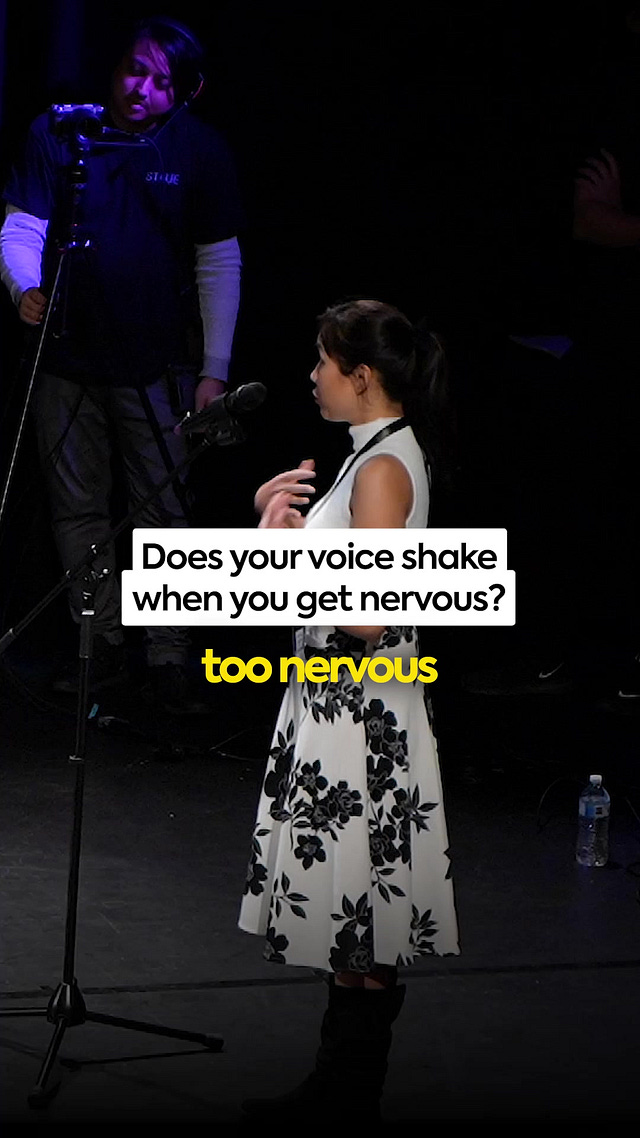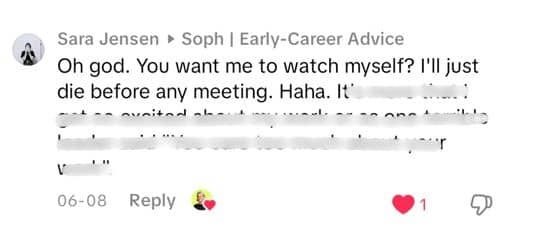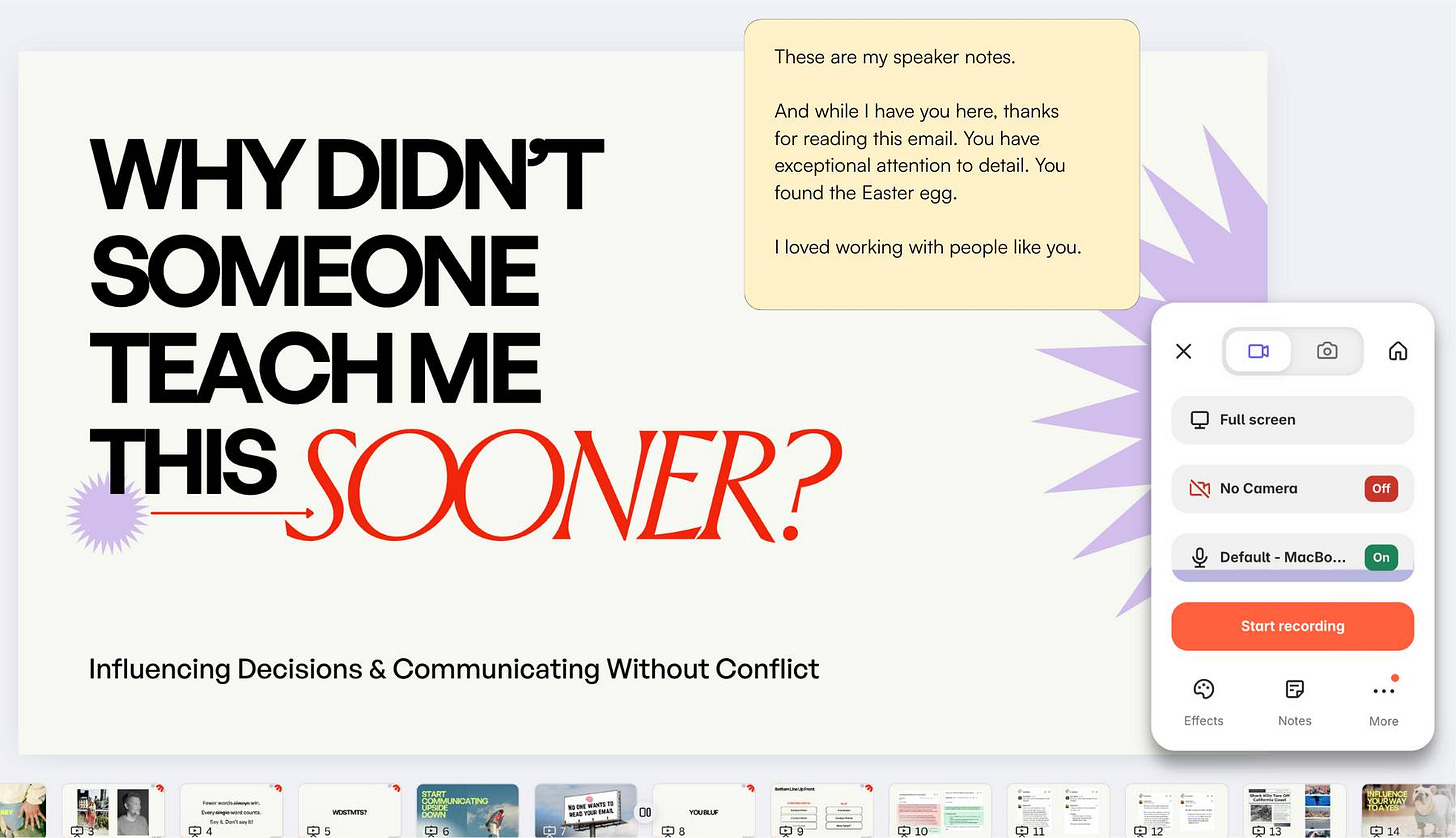Weird stuff that'll make you a better presenter
I spent thousands $$$ on speaker coaches, so you don't have to.
If you’ve been with me a while you’ll know this newsletter is rarely sponsored, but this month I'm partnering with Loom, a work tool I love and use daily. It got me thinking about why I use it so much, and one of the more unconventional reasons is that it makes me a more confident presenter. That has inspired this week's newsletter 🌼
Every speaking coach tells you the same thing: “record yourself presenting and watch it back”. It's good advice. But you never really do it. You're trying to survive a full-time job. Also:
Some things you might actually do...
A speaking coach will also tell you the biggest mistake people make is that they prepare for a big presentation, it goes well, then they don't do it again for months (years!) and the progress is lost.
Muscle memory and reps. Doing things daily, weekly.
Doing (action) = confidence (feeling).
A list of low-effort things use all the time to get better👇🏼
1. Send voice msgs to friends, listen back
You’ll notice really interesting things like:
That painful pause when you were trying to find the right words... doesn’t actually sound that long in reality.
Maybe you overuse certain (umm) words that you don’t (like) like.
The one I picked up from listening to my own VMs is how often I rush one sentence into the next because I think what I’ve just said isn’t interesting. It’s like I talk with no full stops. I’m working on the pause!
2. Do doc/slide walk-throughs with Loom
Instead of emailing people for feedback and input, I genuinely noticed a lift in my speaking confidence when I started recording Loom walk-throughs instead.
It’s such a natural, low-stakes environment for practicing (replicates the feeling of presenting on a video call without the pressure).
It’s just you and your doc. You can show your face (or not).
You can put speaker notes on the screen like this👇🏼
The reason it works is that it's something you end up doing regularly (it's such an good way to share a lot of context quickly, so it sort of just becomes part of your workflow). And because it's regular, presenting feels more natural.
Main ways I use Loom are: (1) feedback, (2) delegating and (3) shortening/ eliminating meetings (ICYMI, free guide to Running Better Meetings).
3. Do weird mouth exercises
I do these before big presentations and recording all my IG/TT videos.
Especially #1 👇🏼

 Tiktok failed to load.
Tiktok failed to load.Enable 3rd party cookies or use another browser
4. Give the adrenaline somewhere to go
You shake because your body’s making adrenaline. Give it somewhere to go.
Personally I find a room, jump up and down on the spot for a few mins, then do big shoulder rolls and windmill arms.

 Tiktok failed to load.
Tiktok failed to load.Enable 3rd party cookies or use another browser
5. Talk to the room, before you talk to the room
If you’re presenting to a room of people, mingle before you start. Talk to a few people in the audience first.
There’s a lot of science behind why this works (shifts your focus from inwards to outwards, reduces the spotlight effect etc.) but it also helps you use those people as anchor points for eye contact and engagement when you’re actually talking.
Works just as well for smaller meetings too. Small talk before you present is smart (not a time-waster).
6. Do a (subtle) physiological sigh
I use this one the most. If you’re sitting in a meeting, heart racing while you wait your turn to talk, do this: two short inhales through the nose, one long exhale out the mouth. Repeat a few times. It’s one of the fastest ways to calm your nervous system and steady your voice.
7. Exposure therapy (like spiders)
Proving that even the most talented and outwardly confident people struggle, a (high-performing) Google teammate explained how she used exposure therapy principles to overcome her phobia of public speaking.
If someone’s afraid of spiders, the first step isn’t putting them in a room with a tarantula (you can actually do significant psychological damage by jumping straight to the scary thing). Instead, it’s showing them a sketch of a spider. Then a photo. Then a spider in a glass box. You work your way up.
She did the same with speaking. She built a spreadsheet and tracked every small rep:
Speaking in a 5-person meeting with one slide
Asking a question in a company town hall
Presenting in a bigger team meeting, etc.
Only only once her body stopped reacting to those did she move to harder things.
We're all WIP (I def am)
Soph ✌🏼






Recovering shy presenter here! 👋🏼 Listening back to my talks and paying attention to breathing has helped so much. And ditto to the jumping up and down!
Loom recordings can be so helpful when prepping for a talk! And I love the jumping up and down idea, going to have to try that next time :)